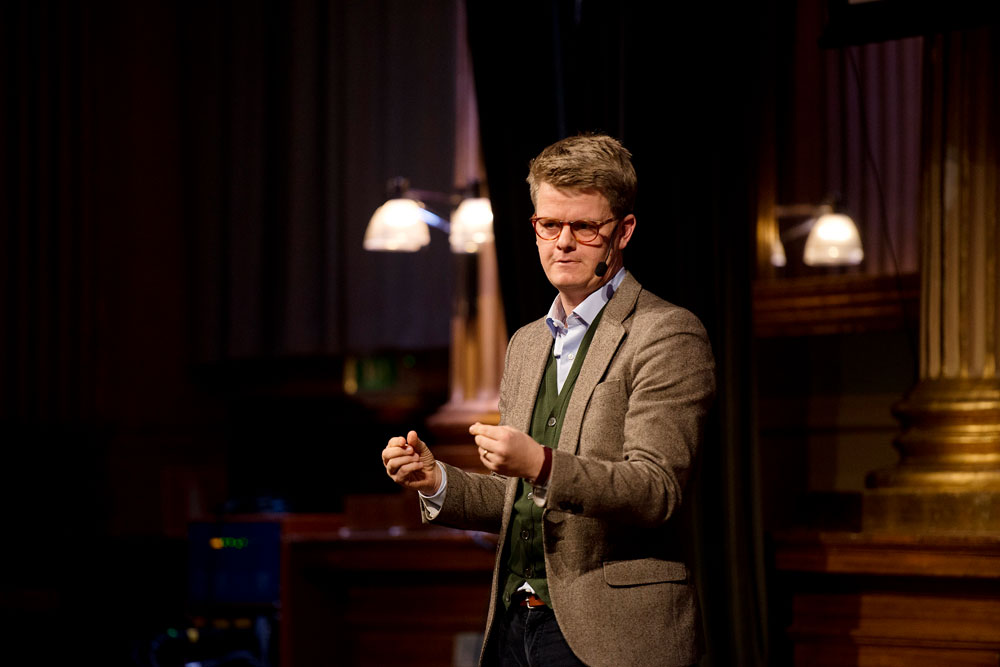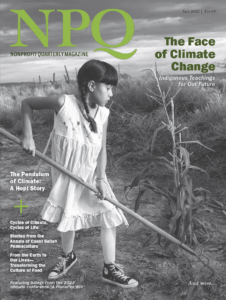
November 11, 2019; CityLab
If someone were to turn around in a meeting and ask, “What are three things you can do to help avert the climate crisis?” you would probably have a ready answer. It could be any number of things: take more public transit, eat less meat, buy LED lightbulbs, compost your kitchen waste, donate to a wildlife refuge. The list is virtually endless. If pressed, you might even be able to expand on next-level solutions; individual actions matter, but they matter a lot less than big companies who pollute and extract Earth’s resources. We’ve been through these facts so many times, we probably repeat them in our sleep—and yet, the planet warms and the fires rage.
The earth isn’t in crisis because we don’t know how to stop the burn. It’s not even that we know what’s needed and don’t have it, says Per Grankvist. We have the solutions; we’re just not implementing them well or quickly enough. So, the leverage point in the climate crisis…is us.
We might be tempted to throw up our hands in despair. What else is there to do in the face of a world that sees the planet burning, has the firehose, and just won’t pick it up? How can we reach people who won’t connect the dots?
Tell stories, says Grankvist—lots of stories. Not about the polar bears and how they’re struggling to find food, or the quest to find out where all the bees went, but about ordinary people living in a sustainable world. That’s how you get people to pick up the hose: tell them a story about that time they picked up the hose and put out the fire and it wasn’t as scary as they’d feared.
Per Grankvist has recently joined Viable Cities, a Swedish initiative led by the KTH Royal Institute of Technology that will bring together stakeholders in research, innovation, and entrepreneurship to achieve climate neutral cities by 2030. He is the first to hold the position of Chief Storyteller.
Climate story initiatives are not unheard of in the US. NPQ wrote in May about the launch of Covering Climate Now, a collaboration of newsrooms promising to tell climate stories. In Iowa City, an organizer launched the Climate Narrative Project to use theatre, dance, music and other arts to tell stories about environments that matter to performers. In DC, the Welders playwrights’ collective is currently producing an iterative performance piece about our relationship to the earth.
Sign up for our free newsletters
Subscribe to NPQ's newsletters to have our top stories delivered directly to your inbox.
By signing up, you agree to our privacy policy and terms of use, and to receive messages from NPQ and our partners.
Grankvist’s project is a little different. He thinks that people’s reluctance to sign on to climate-friendly living can be overcome by stories that allay fears about upheaval or loss of control. It’s sort of like how sports coaches tell players to visualize success before they play a game—and actually, studies have shown this improves performance. It helps athletes believe success is possible. Grankvist theorizes same is true for sustainable living.
He described his approach to Feargus O’Sullivan at CityLab:
You can use approaches such as [portraying] the story of someone’s day—something pretty normal, like taking your bike to kindergarten, dropping your kids off, and then jumping on an electric bus to work. When you look closer, however, there’s a whole bunch of sustainable, climate neutral solutions going on. That tells the inhabitants of Malmö that the future isn’t entirely frightening. We won’t have flying cars. It will be fairly similar, even though we have to make some fundamental changes.
A former journalist, the Chief Storyteller doesn’t wish to discard facts, but he says that current approaches to persuasion prioritize facts over stories, and that will never work. Using children’s movies as a vehicle to explain the power of story (a role they often play), he writes that accepting characters’ actions as “emotionally true” is more critical to accepting a story than the facts of the setting.
“Everyone trying to tell a story about a future in cities has to remember that we at the same time are telling a story about a fictional city,” he explains, “and borrow a page from fictional storytelling in order to make it believable.”
We might argue that it’s time to face some fears, that some radical changes are needed, and that forcing dominant power-holders to give up some control in favor of broad access to resources is the way to a just world. All these things are true. And yet Grankvist’s project doesn’t dismiss these possibilities. He agrees that “all stories have to be locally anchored,” and will look different based on the people and resources in each place. But it may be more effective, rather than barraging people with “shoulds,” to invite them into a story.—Erin Rubin













